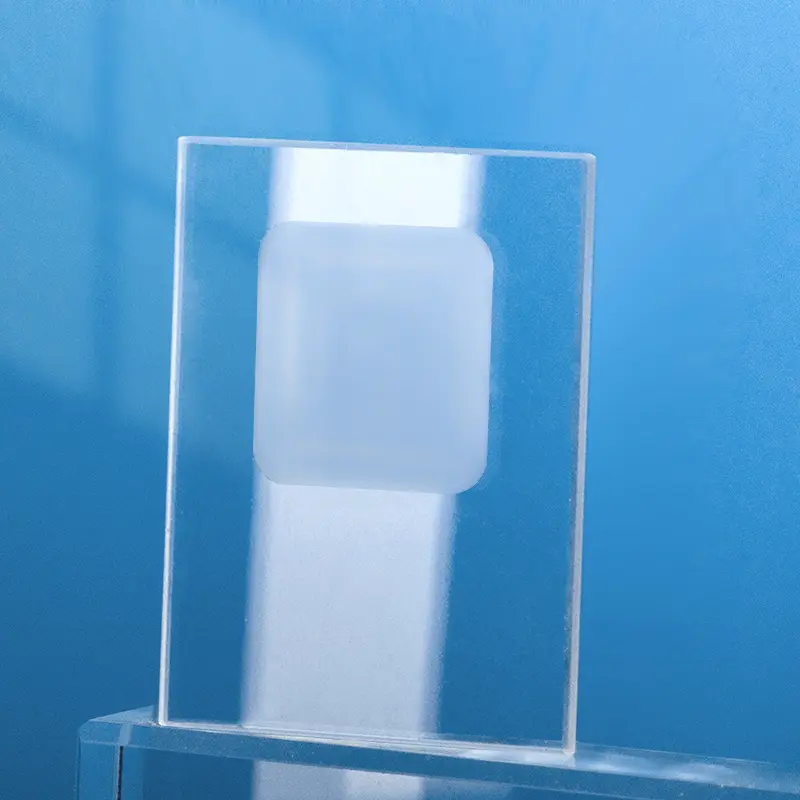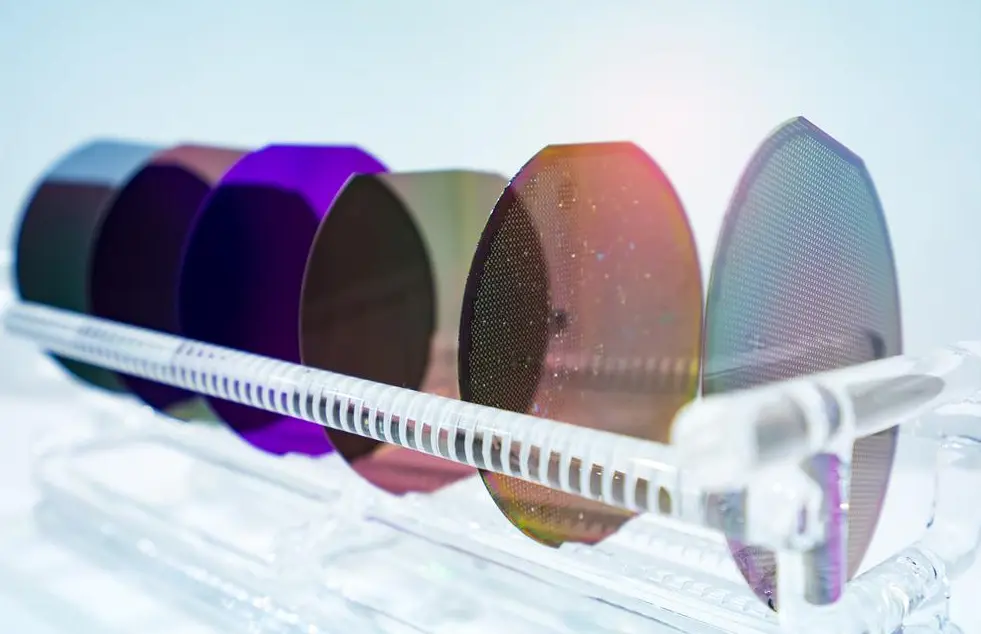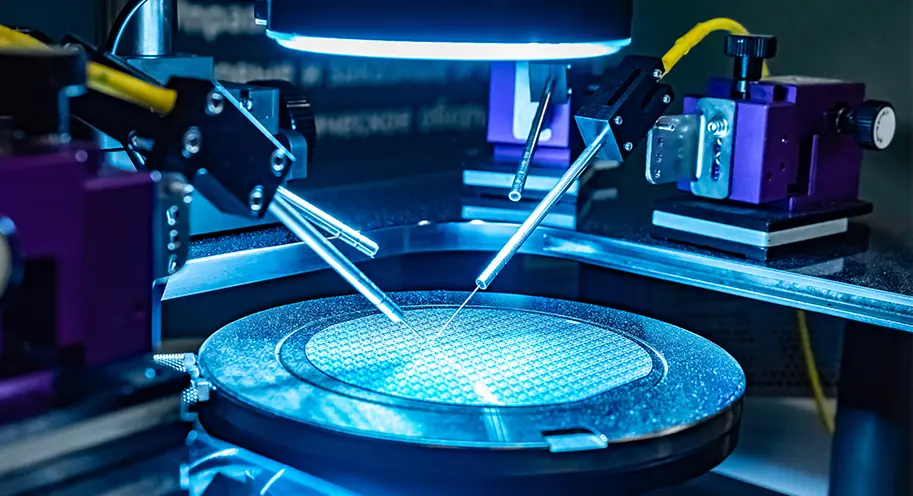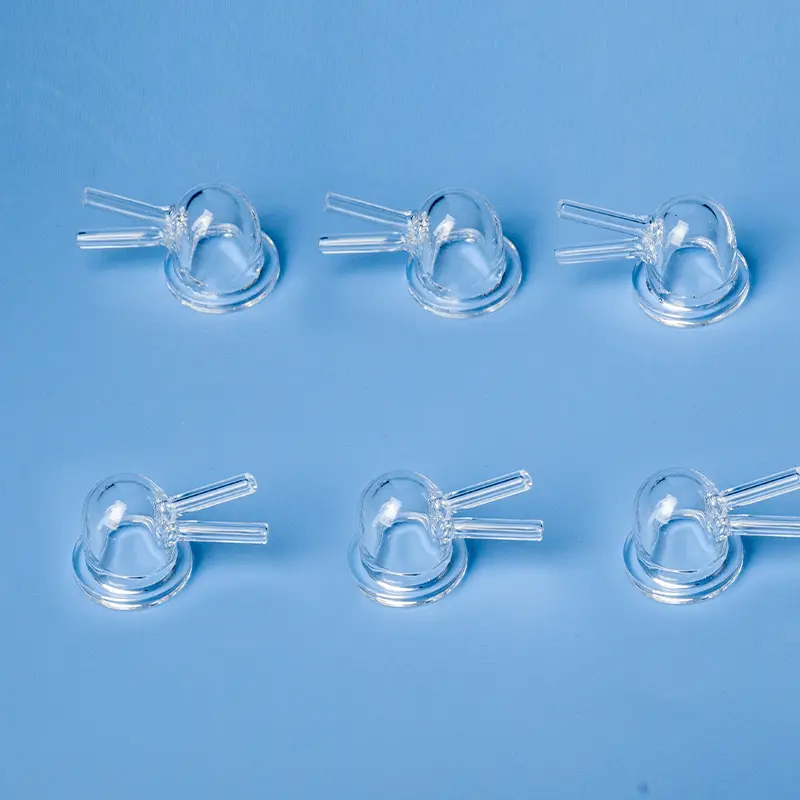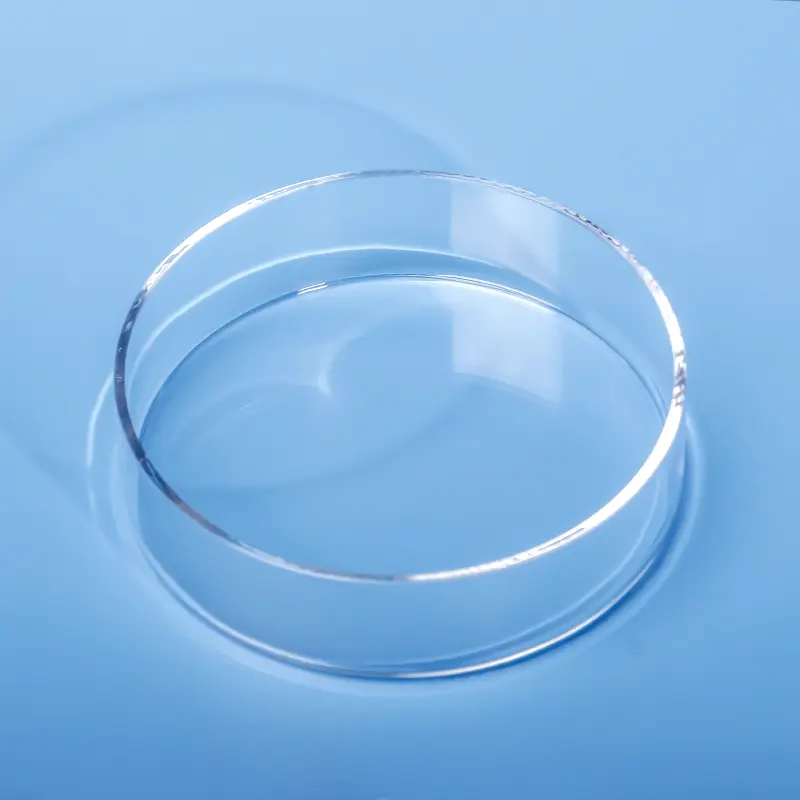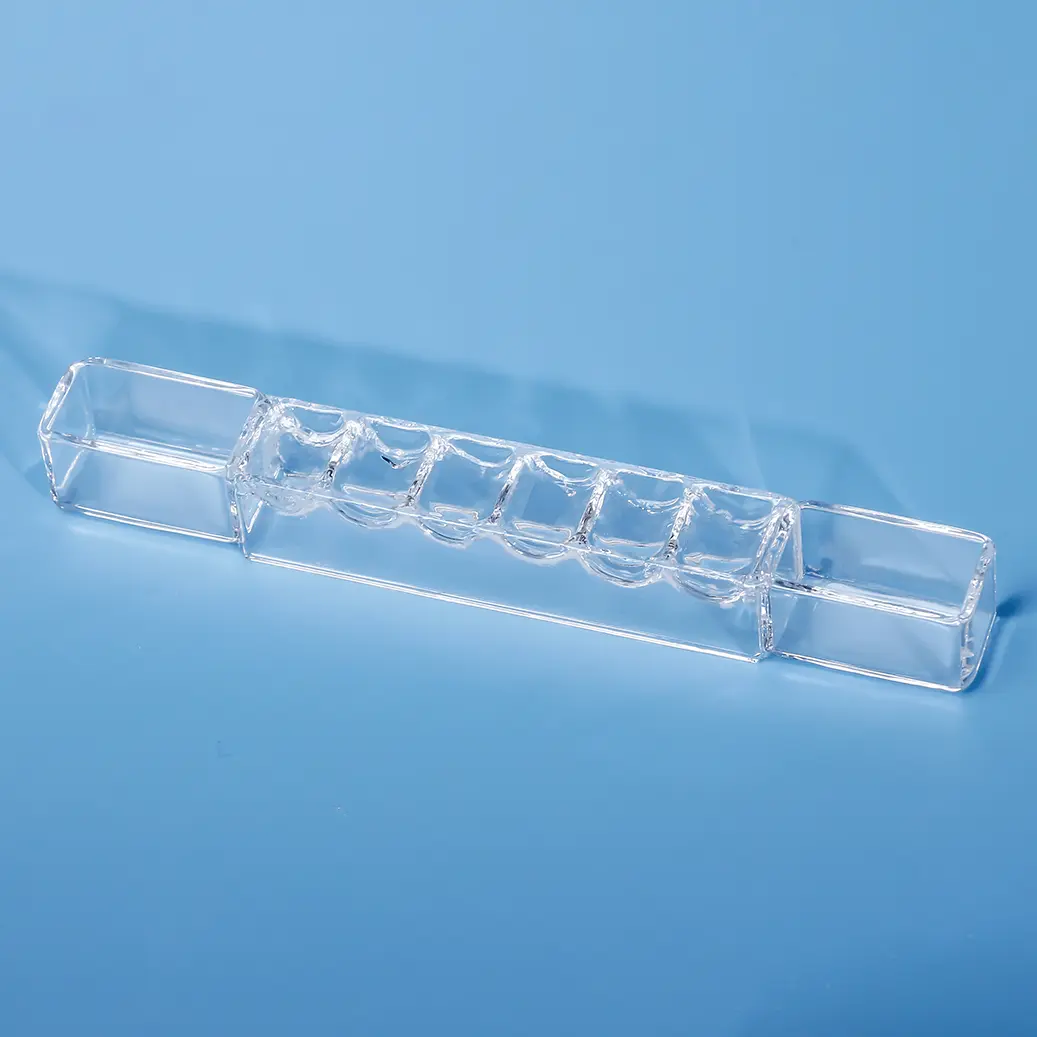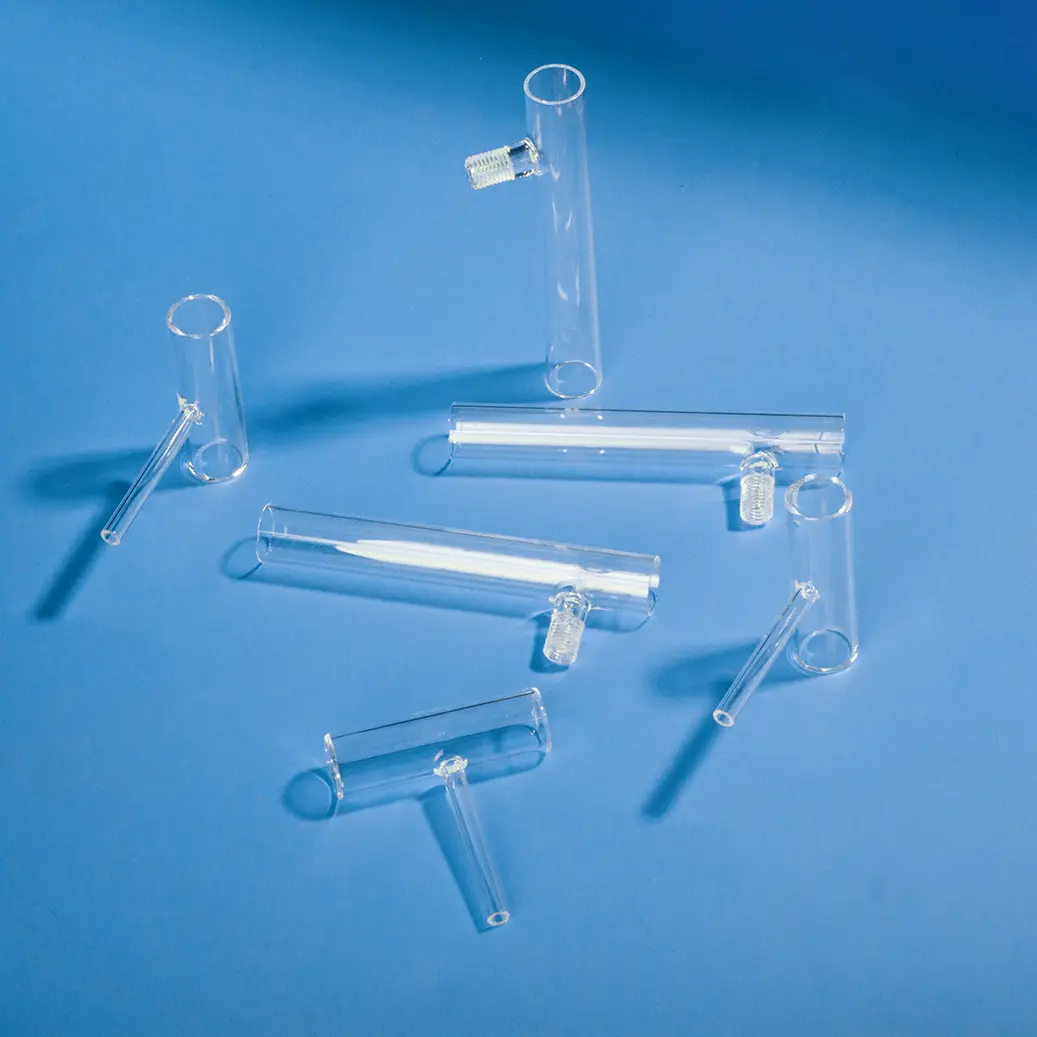当社の石英XRD試料ホルダーは、高純度溶融石英から精密に製造されており、X線回折分析において最小限のバックグラウンド干渉を保証する非晶質構造を提供します。中央にすりガラス状の長方形の試料ウェルを備えた透明なデザインは、耐薬品性に優れ、極端な温度にも強く、粉末や薄膜を含む様々な試料タイプに理想的です。さまざまなX線回折装置や高度な研究用途の特定の要件を満たすカスタムソリューションを提供します。
| 特性内容 | 特性値 |
|---|---|
| SiO2 | 99.99% |
| 密度 | 2.2×10³ kg/cm³ |
| 硬度 | モース硬度 5.5~6.5; ヌープ硬度 570 (荷重100g) |
| 引張強度 | 4.8 × 10⁷ Pa (48 N/mm² または 48 MPa); 7,000 psi |
| 圧縮強度 | >1.1×10⁹ Pa (160,000 psi) |
| 熱膨張係数 | 5.5×10⁻⁷ cm/cm·°C (20°C-320°C) |
| 熱伝導率 | 1.4 W/m-°C |
| 比熱 | 670 J/kg-°C |
| 軟化点 | 1730度C(3146度F) |
| 徐冷点 | 1210度C(2210度F) |
| 歪点 | 1120度C(2048度F) |
| 使用温度 | 1200°C |
| 電気抵抗率 | 7×10⁷Ωcm (350°C) |
| サイズ | カスタマイズ対応 |
| ロゴ | ロゴのカスタマイズ対応 |
高温耐性
石英製XRD試料ホルダーは、軟化点が約1730°Cの石英ガラスでできています。これらは1100°Cで長期間使用でき、短時間であれば1450°Cまでの温度で使用可能です
化学的安定性
石英ガラスはほとんどの酸との化学反応に対して非常に高い耐性を持っています。その耐酸性はセラミックスの約30倍、ステンレス鋼の150倍優れています。特に高温下で卓越した化学的安定性を示します。
低熱膨張係数
石英ガラスは熱膨張係数が極めて低いため、急激な温度変化にも破損することなく耐えることができます。これにより、優れた熱安定性を提供します
優れた光透過性
石英ガラスは、紫外域から赤外域までの全スペクトルにおいて優れた光透過率を示します。可視光透過率は93%を超え、紫外スペクトル領域では90%以上の透過率を達成できます
アプリケーションシナリオ
石英XRD試料ホルダーを実験で使用する際には、以下の点に注意する必要があります:
試料の汚染や回折結果への影響を避けるため、試料ホルダーが清潔で埃がないことを確認してください。
最適な回折信号を得るために、試料は試料ホルダー内に均一に充填されている必要があります。
過度な温度差による石英ガラスの割れを防ぐため、試料ホルダーを急激な温度変化にさらさないでください。
高温または特定の条件下で試料ホルダーを使用する際は、製造元のガイドラインおよび安全規制に従ってください。
石英XRD試料ホルダーの清掃とメンテナンス方法は以下の通りです:
柔らかい布やブラシを使って、試料ホルダー表面のほこりや残留物を優しく取り除いてください。
頑固な汚れには、中性洗剤と水で清掃してください。ただし、化学物質の残留を避けるため、徹底的にすすぎ、乾燥させることを確実にしてください。
特に高温・高圧実験後は、試料ホルダーにひび割れや損傷がないか定期的に確認してください。
直射日光や湿気の多い環境を避け、乾燥した清潔な場所に保管してください。
本地化最终翻译: 石英XRD試料ホルダーの寿命は、以下の様々な要因に左右されます:
使用頻度および実験条件:頻繁な使用や過酷な条件下での使用は、寿命を縮める可能性があります。
試料ホルダーのメンテナンスと清浄度:適切なメンテナンスは寿命を延ばすことができます。
試料ホルダーの材料と製造品質:高品質な石英ガラスは一般的に耐久性が高くなります。
よくある質問
当社は、高純度石英ガラス部品の一貫製造を専門としております。主な製品ラインナップは以下の通りです:
石英管・石英棒: 幅広い直径と仕様。
石英プレート・ディスク: 光学および工業用途向けに精密に切断・研磨。
石英実験器具: ビーカー、フラスコ、ボートなど、標準品から特注品まで幅広い種類のガラス器具。
半導体グレード石英: 半導体製造用のプロセスチューブやキャリアなどの高純度部品。
特注加工部品: お客様固有の設計および仕様に合わせて、複雑な部品を製造できます。
はい。特注加工(カスタム加工)は、当社の事業の中核です。10年以上にわたる専門的な経験を活かし、お客様企業と提携し、専門的なOEM/ODMサービスを提供しております。当社の加工技術には、溶接、研削、穴あけ、研磨、曲げ加工、その他さまざまな精密加工技術が含まれており、お客様の厳密なご要望にお応えする部品を製造いたします。
品質は当社の製造プロセスにおいて最も重要です。当社はISO 9001:2015認証取得メーカーであり、当社のプロセスが国際的な品質管理基準を満たしていることを保証します。また、当社の製品は純度と性能に関して厳格なSGS試験を受けています。当社は高純度原材料(SiO2 99.998%まで)を使用し、優れた熱安定性、高温耐性、化学的不活性を持つ溶融石英および溶融シリカ製品を製造しています。
当社はプロセスを最大限に効率化しました:
RFQ(見積依頼)を提出:ウェブサイトのお問い合わせフォームまたはEメールで、技術図面、仕様、要件をお送りください。
迅速な対応: 数分以内に初回返信を、30分以内に詳細なご連絡を差し上げます。
設計・提案:24時間以内に詳細な設計提案と競争力のある見積もりをお届けします。
試作・生産:承認後、お客様の納期に間に合わせるため、迅速に試作から本格的な量産へと移行いたします。
Aoxin Quartzとの提携には、いくつかの重要なメリットがあります:
実証された専門知識:業界で10年以上の経験を持つ当社には、複雑な課題に取り組むための技術的知見があります。
One-Stop Solution: We manage the entire production process, from sourcing high-purity raw materials to fabricating and finishing complex components.
競争力のある価値:主要な石英生産拠点に位置することで、効率的なサプライチェーンと先進的な製造技術を活用し、競争力のある価格で卓越した品質を提供しています。
Dedicated Partnership: Over 90% of our clients become long-term partners. We are committed to your success through responsive service, reliable quality, and innovative solutions.

